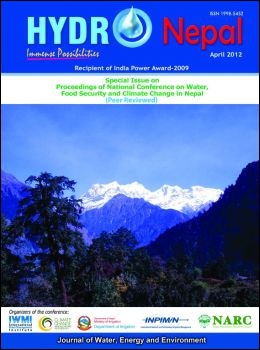Adapting Rice Technologies to Climate Change
DOI:
https://doi.org/10.3126/hn.v11i1.7209Keywords:
Rice technologies, drought, submergence, alternate wetting and drying (AWD), NepalAbstract
Rice is prime crop that contributes to food security and provides employment to a large number of populations in Nepal. More than 51% of the area of rice land in Nepal is rain-fed. Over the last few years, however, the country has been experiencing erratic rainfall, with less water available for rice cultivation, as well as temperature rise. There are both submergence (flooding) problems and drought in the main rice growing areas. Hence, there is a need to generate suitable rice technologies under such adverse conditions.
The International Rice Research Institute (IRRI) has initiated research in collaboration with the Nepal Agricultural Research Council (NARC) and the Institute of Agriculture and Animal Sciences (IAAS) to develop suitable rice technologies for submergence and drought prone areas of Nepal. Various rice germplasm was brought from IRRI, Philippines, and research was conducted at NARC and IAAS as well as in farmers’ fields following a program of Participatory Varietal Selection (PVS). Water-saving rice technologies as well as other technologies, including indigenous practices, were identified for utilizing less water for rice cultivation. Several varieties of rice under drought prone and under submergence conditions were identified, and have been recommended for cultivation by Nepalese farmers.
DOI: http://dx.doi.org/10.3126/hn.v11i1.7209
Hydro Nepal Special Issue: Conference Proceedings 2012 pp.69-72
Downloads
808
1217
Downloads
Published
How to Cite
Issue
Section
License
The copyright of the articles and papers published is held by HYDRO Nepal Journal.
The views and interpretation in this journal are those of author(s), and HYDRO Nepal does not bear any responsibility for the views expressed by authors in the journal.




